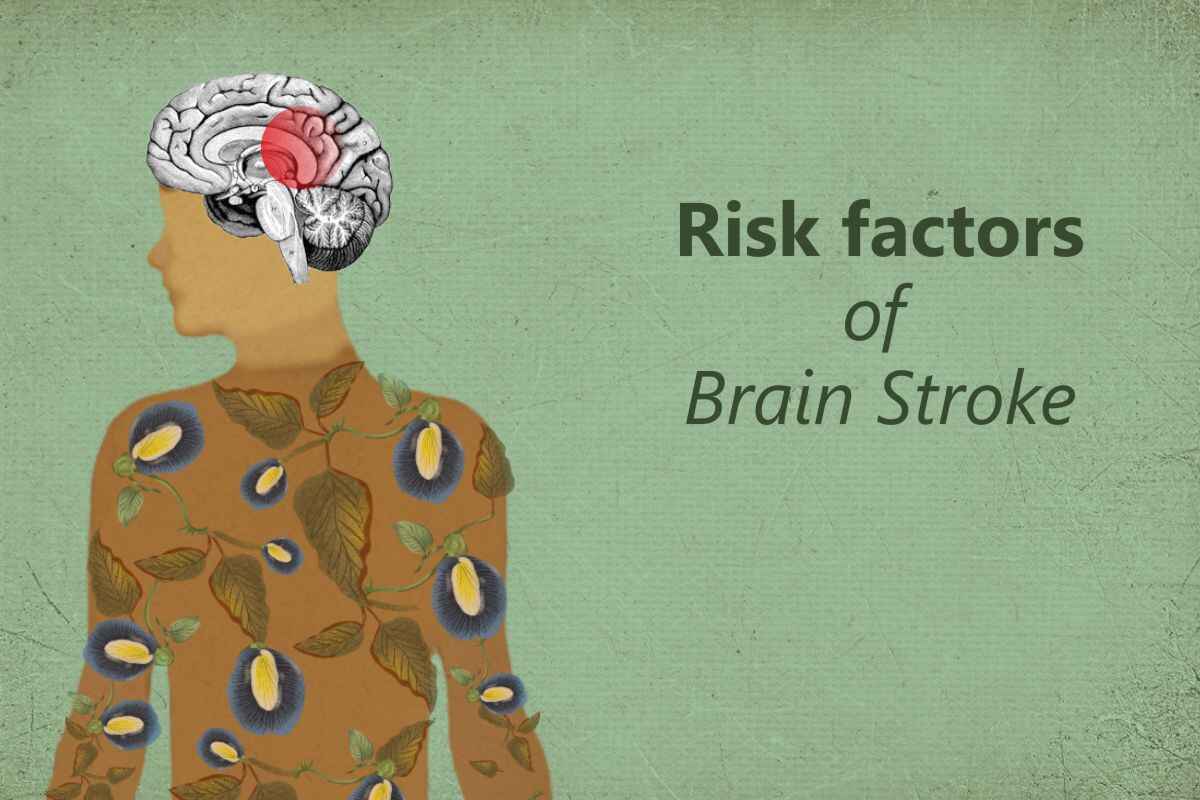What is Brain Stroke?
A Brain Stroke happens when blood cannot reach certain parts of the brain preventing brain tissues from getting oxygen and nutrients.
This situation can be extremely fatal as brain cells start dying within minutes after the blood doesn’t receive oxygen.
Brain function is lost when brain cells are destroyed. Affected brain regions may prevent you from performing certain tasks.
These tasks include your ability to move, eat, speak, think, remember and so many daily basic tasks.
How Does Ayurveda Define Brain Stroke?
Brain Stroke is correlated with Pakshaghata in Ayurveda. It happens due to the imbalance of vata dosha, which controls the motor and sensory activities in the body.
An increased vata accumulates in the corresponding blood vessels disrupting the flow of blood leading to a brain stroke.
Who is Prone To a Stroke?
A Stroke can happen anytime to anyone. But there are several factors that increase the risk of having a Brain Stroke.
There are some risk factors that can be controlled and some cannot be controlled.
Let us first have a look at the risk factors which can be controlled.
High Blood Pressure:
High blood pressure can result in blood clots forming in the arteries that supply blood to the brain, obstructing that flow resulting in a Stroke.
Blood veins, also known as arteries that supply the brain with blood, can get damaged if blood pressure is 140/90 or greater.
Heart Related Disease:
Lack of blood supply to certain body parts can cause heart disease and Stroke.
While a heart attack is caused by an obstruction in blood flow to the heart, a Stroke is caused by a restriction in blood flow to the brain.
Diabetes:
Adults who have diabetes are more likely to experience a Stroke than those who do not.
A person with Type 1 Diabetes cannot produce the insulin required to control their blood sugar levels in their body.
The blood arteries in the body can become damaged over time by high glucose levels, which raises the risk of a Stroke.
Smoking:
Nicotine and carbon monoxide are both absorbed into the bloodstream when you smoke a cigarette.
While the nicotine causes your heart to beat more quickly and increases your blood pressure, the carbon monoxide lowers the amount of oxygen in your blood. This raises your chances of having a Stroke.
History of TIAs (Transient Ischemic Attack):
Approximately 15% of people who have had a stroke have also had a TIA in the past.
A TIA shares the same origin as an Ischemic Stroke, the most prevalent kind of a Stroke.
A clot prevents blood flow to a portion of the brain in an Ischemic Stroke.
High Blood Cell Count:
The blood thickens and clots are more likely when there is a considerable rise in the number of red blood cells.
This increases the chances of having a Stroke. Now, let’s have a look at the factors which are uncontrollable.
Older Age:
Chances of a Stroke increases in older people. Atrial fibrillation, obesity, Type 2 Diabetes, hypertension, hypercholesterolemia and coronary artery disease are among the risk factors with the highest prevalence rates that contribute to an increase in the incidence of ischemic stroke in the aging population.
Gender:
Men are more likely to have strokes than women.
History of Stroke:
After having one stroke, your chance of getting another one increases.
Genetics:
People with a family history of stroke are more likely to suffer from a Stroke.
Race:
Certain races and ethnicities are more at risk for brain stroke.
Compared to white individuals, Black and Hispanic persons are more prone to suffer a Stroke.
Native Americans and Alaskan Natives are particularly at risk for stroke.
Since your doctor can assist you manage some risk factors, regular checkups are important to ensure that your condition doesn’t get worse.
You can check out our website at Dr. Dassan’s Ayurveda and get an ayurvedic treatment in India online consultation from our Ayurvedic health experts.

